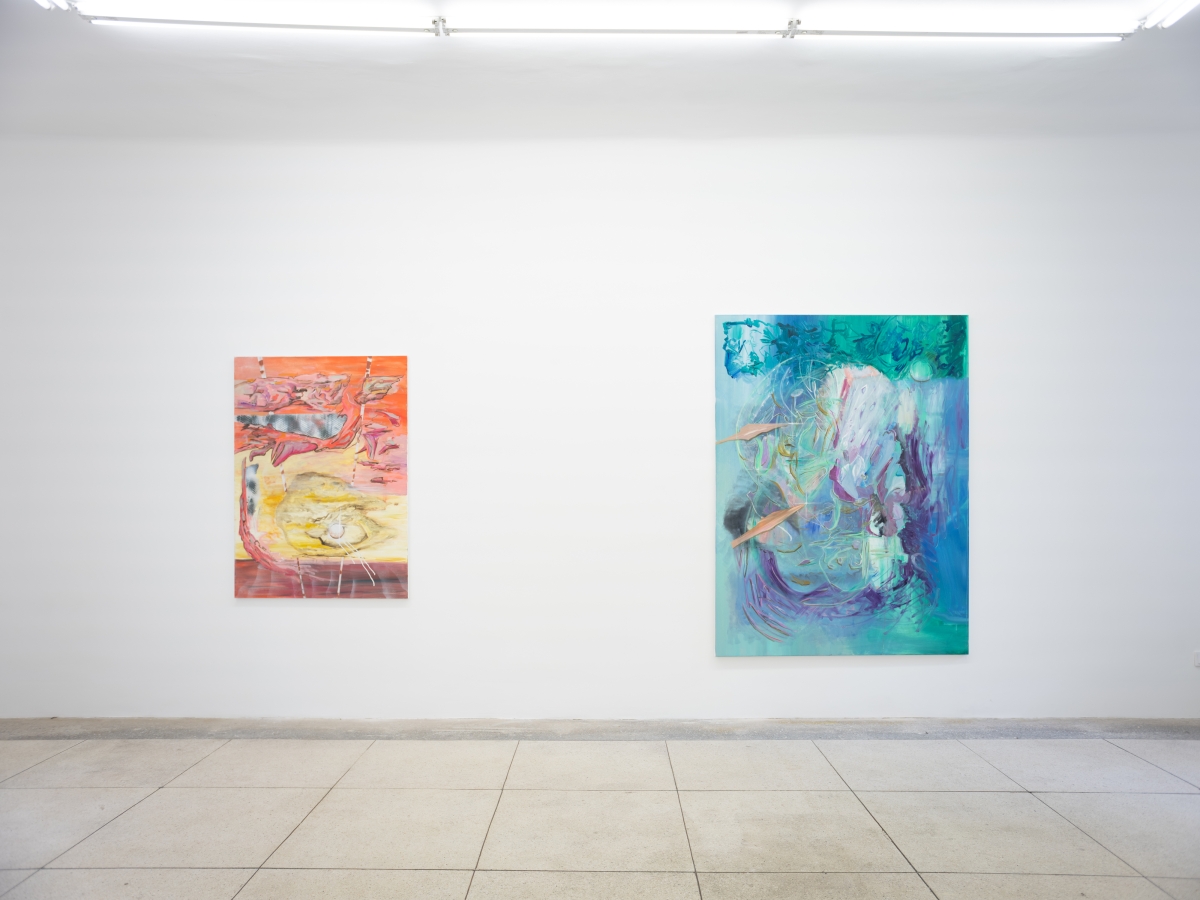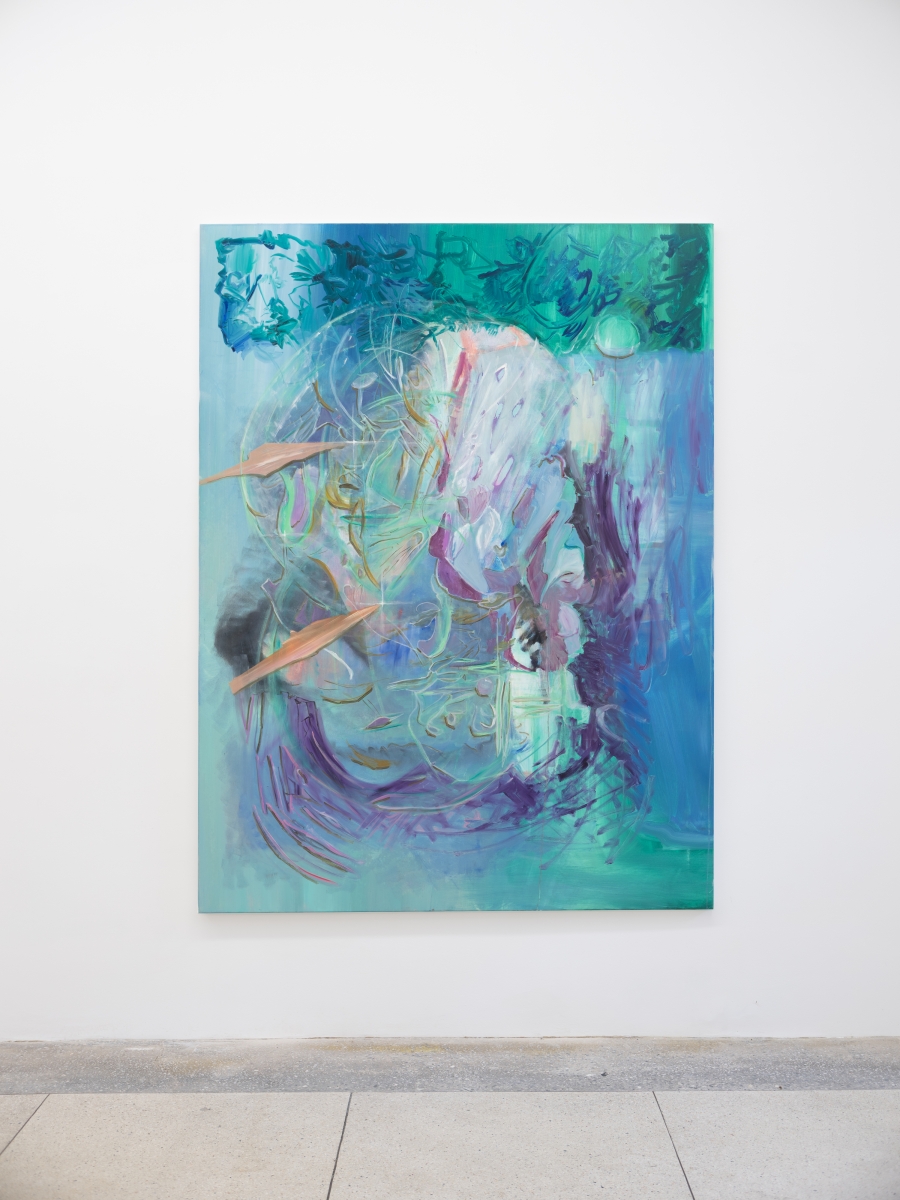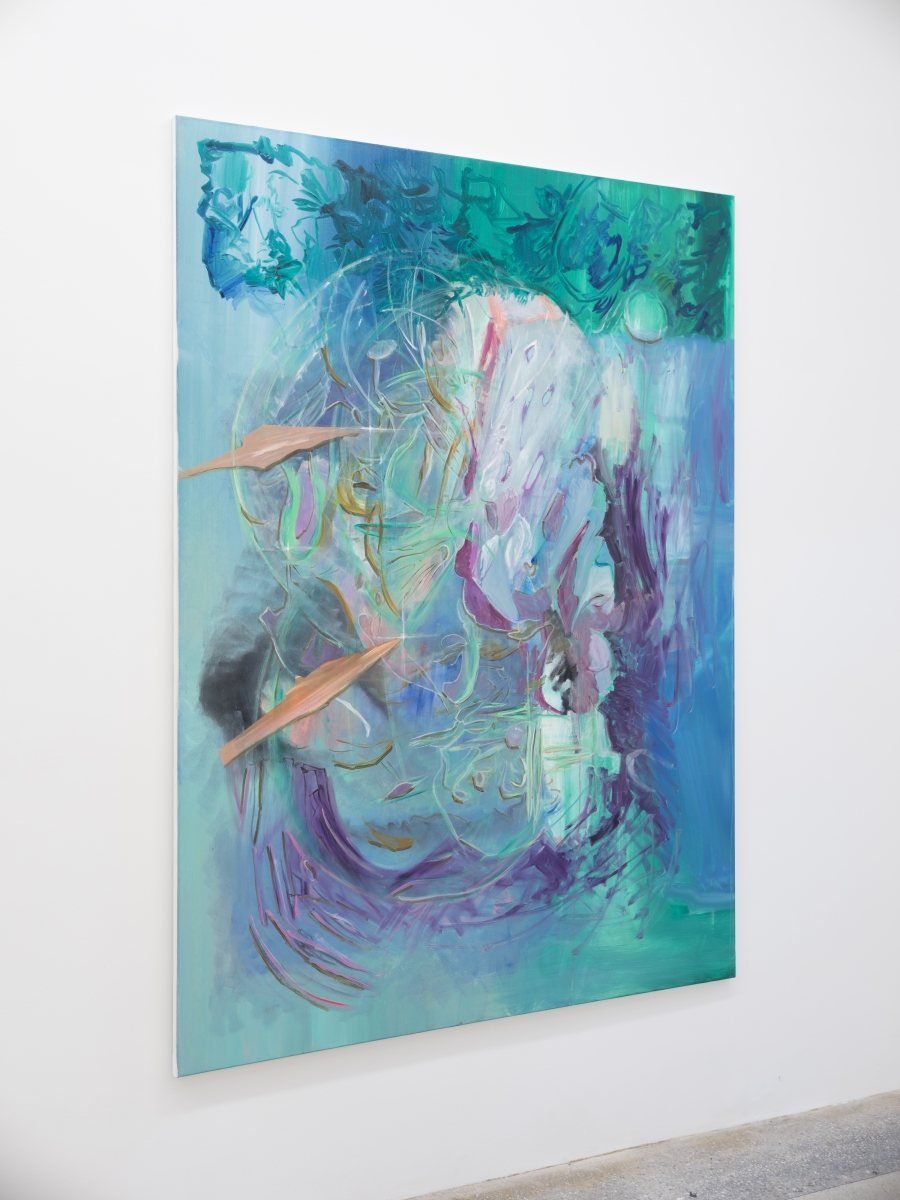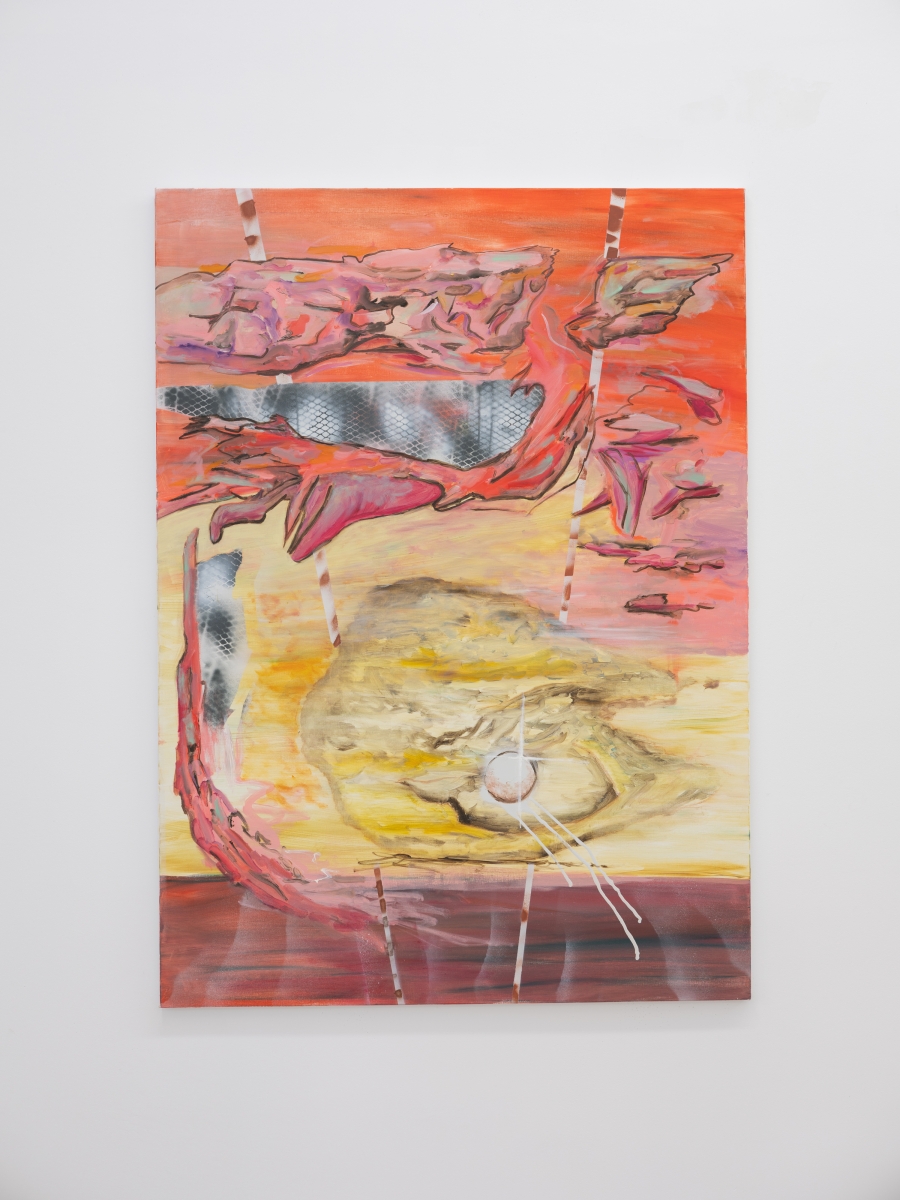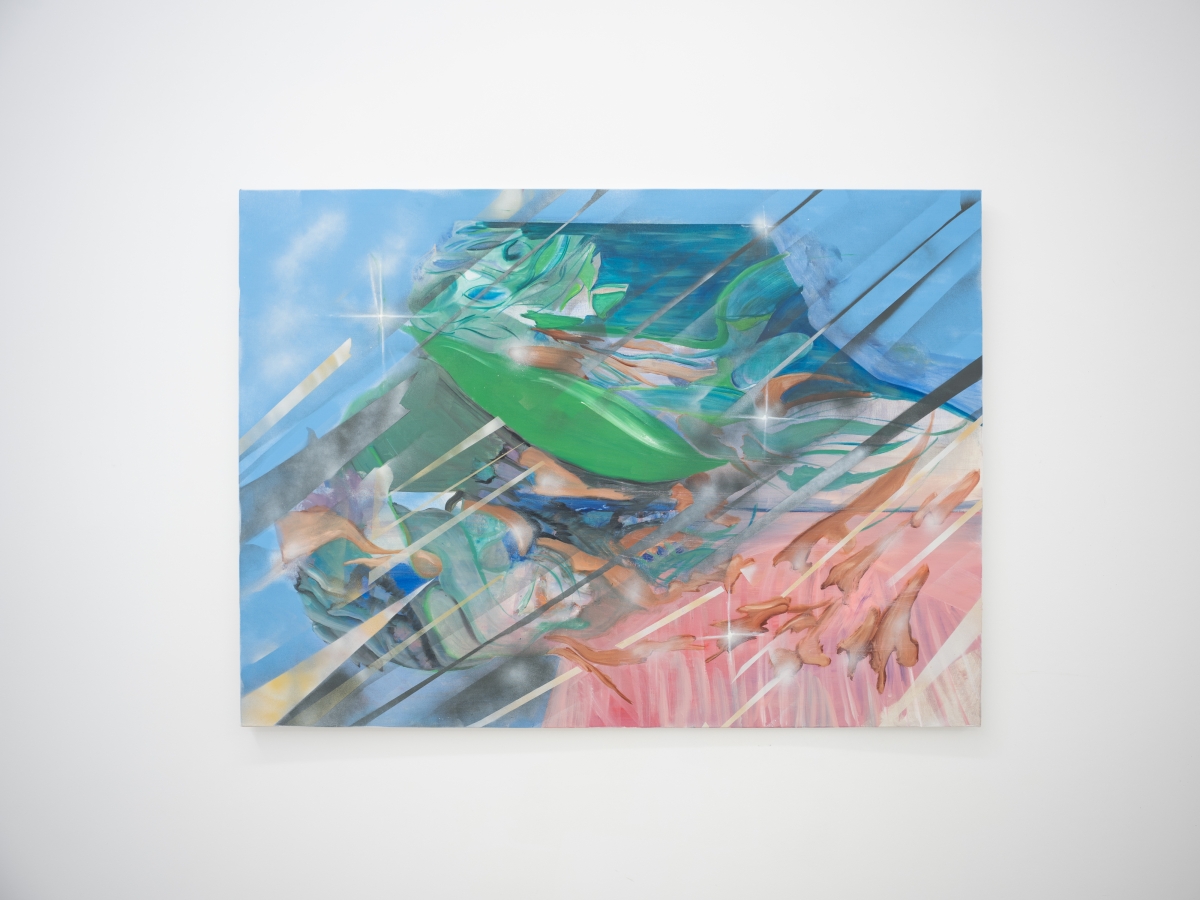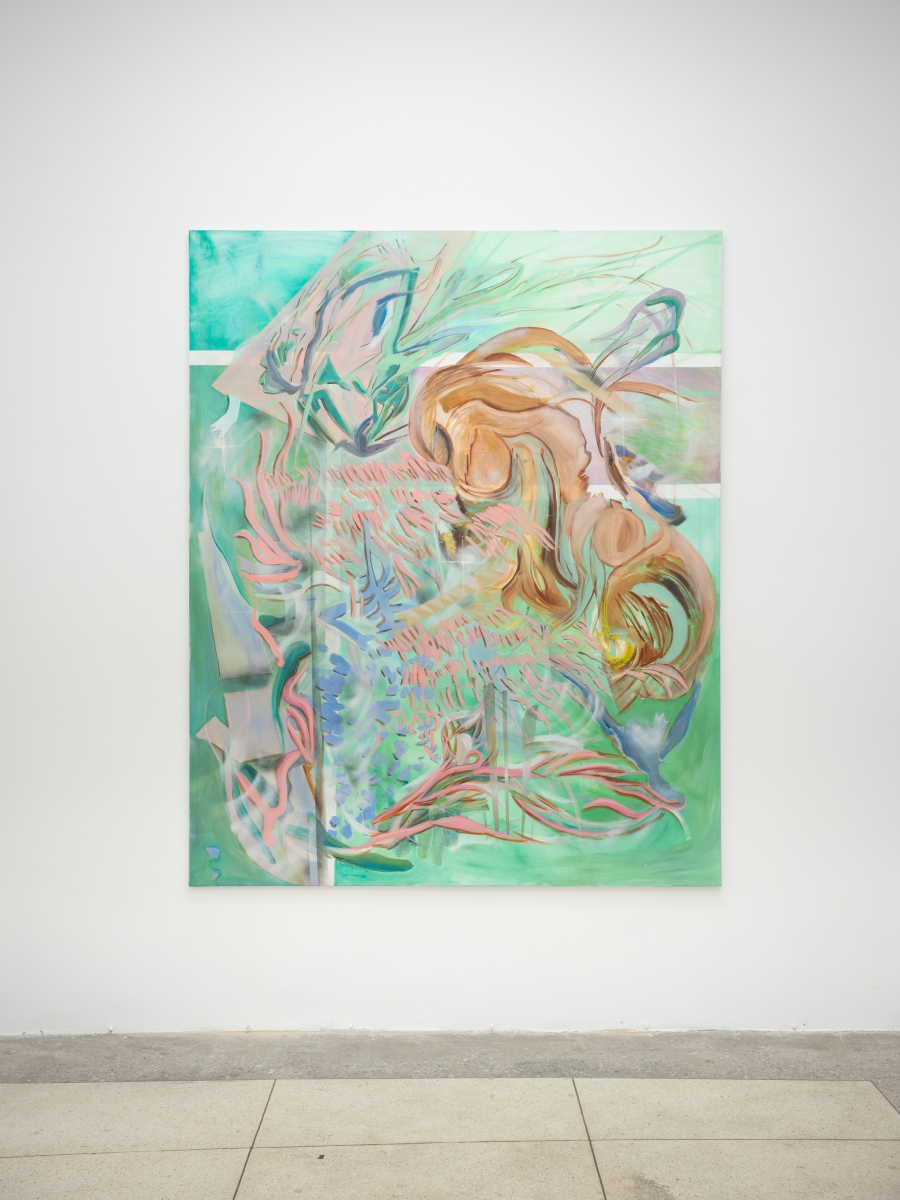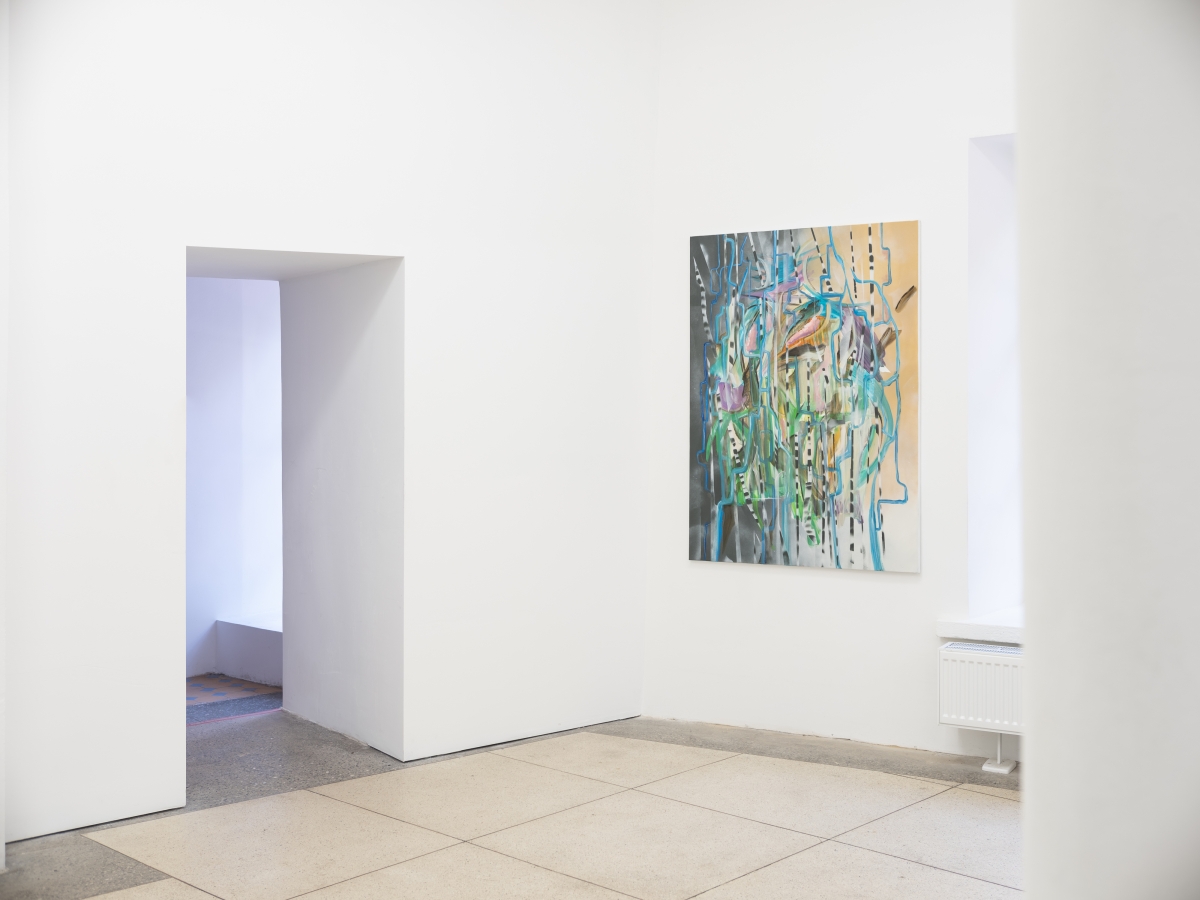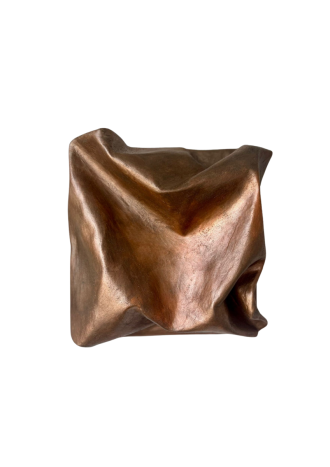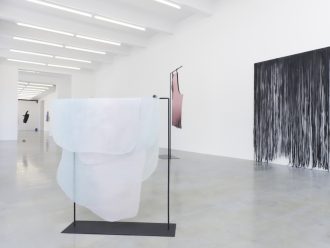[You visit the gallery? No. You experience a 3D virtual tour of the exhibition? No, not quite. You view a TikTok video about the exhibition, a 15-second video set to the catchy rap snippet ‘Now watch me whip, now watch me nae nae’, unexpectedly overlaid with the refined undertones of the ‘Succession’ theme song. Yeah, that’s more like it.]
Did you know there exists a creature that has a completely transparent forehead? This seemingly alien being is known as the barreleye fish, a mysterious denizen of the deep sea. Its unique physical trait is not just an aesthetic wonder, but a survival mechanism precisely honed to its dark, high-pressure environment. This striking creature serves as a poignant reminder of the artist’s constant state: always needing to project their thoughts, emotions and ideas into the world. To continuously maintain a state of absolute transparency with oneself and others. Artists have the daunting task of transferring these complex internal dialogues into chosen media, be it canvas, paper, music, digital platforms, or through the expressive movements of their body in dance or theatre. It is akin to perpetually wandering with your mind laid bare for all to see. Embracing this level of transparency implies that an indiscriminate exchange of influences between you and your surroundings is inevitably going to occur, shaping and reshaping your identity in a dynamic interplay of forces.
A prime example of this phenomenon is the solo exhibition ‘In My ???? Era’ by the artist Aurelija Bulaukaitė. This display, which encapsulates the theme of identity in flux, is currently on display at the Medūza gallery. The ???? in the title potentially serves as a placeholder or symbol, embodying an element of uncertainty or variability. This could be indicative of a generation that is still on a quest to establish its identity, unsure of which direction to choose. It reflects a cultural occurrence wherein the popular cultural trends and mass media narratives often serve as surrogates for individual self-definition. This creates a unique sociocultural dynamic, where personas as disparate as Me in my Barbie era and Me in my Ted Kaczynski era can appear equally appealing.
Amidst the chaotic whirlwind of daily existence, where the line between physical reality and its digital counterpart becomes increasingly blurred, the protagonist within Aurelija’s canvases thrives. This existence, steeped in the turmoil and banality of the mundane, is seemingly embraced with an uncanny vigour. The virtual world, now a seamless part of our daily life, intensifies the chaos. It acts as a catalyst, constantly enhancing and distorting the perceptions of normality, thereby elevating the routine to an experiential plane that straddles the tangible and intangible. Drama permeates all aspects of life: one can find romance in the simple act of buying an iced latte, just as in the poignant visit to a late grandmother’s grave. It is challenging to discern where the ironic facade ends and the authentic self begins, or if it is all merely an elaborate smokescreen. Aurelija’s narrator emerges as a compelling dichotomy. Lost yet leading, this enigmatic figure traverses the visually impaired puzzle of artificial mediocrity. In an environment dominated by superficiality and average experiences, the narrator navigates with a combination of disorientation and audacious guidance. They are simultaneously adrift in this synthetic maze of monotony, and yet, somehow, they also chart the way forward.
Fishing yourself out of this glittery pond is not always an easy task. A new form of digitalised, yet subtly portrayed, female sexuality radiates from paintings like Medusa Met her Kinky Octopus, tantalising the imagination. Aesthetic norms have evolved, shifting away from traditional ‘girl-next-door’ or cover girl paradigms, towards the realm of the ‘manic pixie dream girl’. The modern young woman relates more to mythical entities like mermaids or even sci-fi cyborgs, which consequently may lead some to have even stricter expectations for their appearance. A subtle hint of inner dialogues impacted by eating disorders, a phenomenon that is unfortunately especially prevalent online, is present in the fittingly named painting Time is an illusion. Lunchtime doubly so. In this work, a radiant pearl is revealed in an open shell. The image serves as a reminder: even a tiny irritation like a grain of sand in a mollusc can yield something uniquely beautiful. However, it is essential to remember that the oysters we consume do not actually produce these precious gemstones. This contrast, subtly yet clearly, emphasises the tension between beauty and sustenance, reflecting challenges often overlooked in the public discourse, but which are further magnified in the distortive realm of social media.
In today’s era of unending self-aggrandisement, where narcissism walks hand in hand with objective mediocrity, relatability exemplifies the process of constructing a collective identity through a frozen snapshot of subcultural longing. If we view memetic communication as a bait, the fish that is captured succumbs to what Marshall McLuhan himself dubbed ‘narcissus narcosis’, a fascination with dreamily observing oneself in the media. The painting Me after Wearing a Cute Outfit on a Boring Day enables spectators to visualise their own self-portraits, to discover their unique pearls. This feverish quest to validate one’s individuality and significance is vividly encapsulated in the contemporary film Pearl (2023, dir. Ti West), which has recently garnered a cult following across various social media platforms. In it, a young woman teetering on the edge of madness seeks stardom, in a desperate bid to escape the monotony, isolation and lack of love inherent in life on her parents’ farm. Without spoiling the film, one could argue that in the echo chambers of today’s social media, users begin to empathise with antisocial individuals like Aileen Wuornos, or, arguably, Tonya Harding, signalling the final phase in postmodern consumption and late capitalism. The ‘final boss’ in this identity game is to unapologetically embrace your own ‘villain era’.
Not everyone is comfortable with these public discourses unfolding on the Internet. Recognising that users on TikTok were appropriating her music for their superficial, seductive, yet reductive aesthetics, which merely fetishise female pain, the singer Fiona Apple chose to remove her music from the platform. Art is a profound manifestation of the self, and more often than not, artists disclose their true identities through their work. Even the personas crafted for the world eventually merge with one’s authentic self, influencing and defining the essence of who they truly are. Within this context, the act of de-influencing, getting a flip-phone and deleting your social media profiles, begins to appear more enticing. However, your assigned FBI agent will certainly miss the memes you used to share. Just post one finale ‘the end of an era’ meme, please.
Aurelija Bulaukaitė’s exhibition ‘In My ???? Era’ is open till 24th of June at Medūza gallery, Vilnius
Photography: Laurynas Skeisgiela


